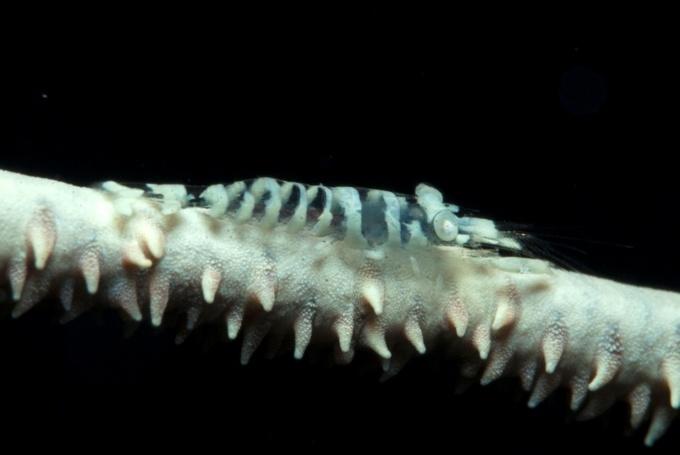
The Dutch Caribbean has a long history of taxonomic research, starting with species descriptions by Pallas (1766). In the last decades much research on the natural history of the Dutch Caribbean was published by scientists affiliated with Naturalis Biodiversity Center. Most of their studies were based on collected material, while present research is focused on the phylogeny and ecology of reef organisms, for which freshly collected material is used and electronic documentation (photographs, video).
Photograph: The symbiotic shrimp Pseudopontonides principis (Criales, 1980) on black coral. Curaçao, photo C.H.J.M. Fransen, 2013.
Inshort
Five workers in the group have a focus on this area researching marine invertebrates. Aspects of coral reef health are researched through associations between host corals and invertebrate symbionts; species communities through discovery of new species, new localities and identification of invasive species; and subterranean island fauna evolution through interstitial invertebrates in marine sand and terrestrial groundwater.

Who do wework with?
On this project we work together with six Caribbean organisations:
- Substation Curaçao
- Caribbean Netherlands Science Centre op St. Eustatius
- St. Eustatius National Parks (STENAPA) op St Eustatius
- Nature Foundation St. Maarten op St Maarten
- Stichting Nationale Parken Bonaire (STINAPA) on Bonaire
- Carmabi Marine Research Station op Curaçao
- Dutch Caribbean Nature Alliance
We also collaborate with:
In themedia
Springer Link (2017): Editorial: biodiversity of Caribbean coral reefs (with a focus on the Dutch Caribbean)
Curasub(in Dutch)






